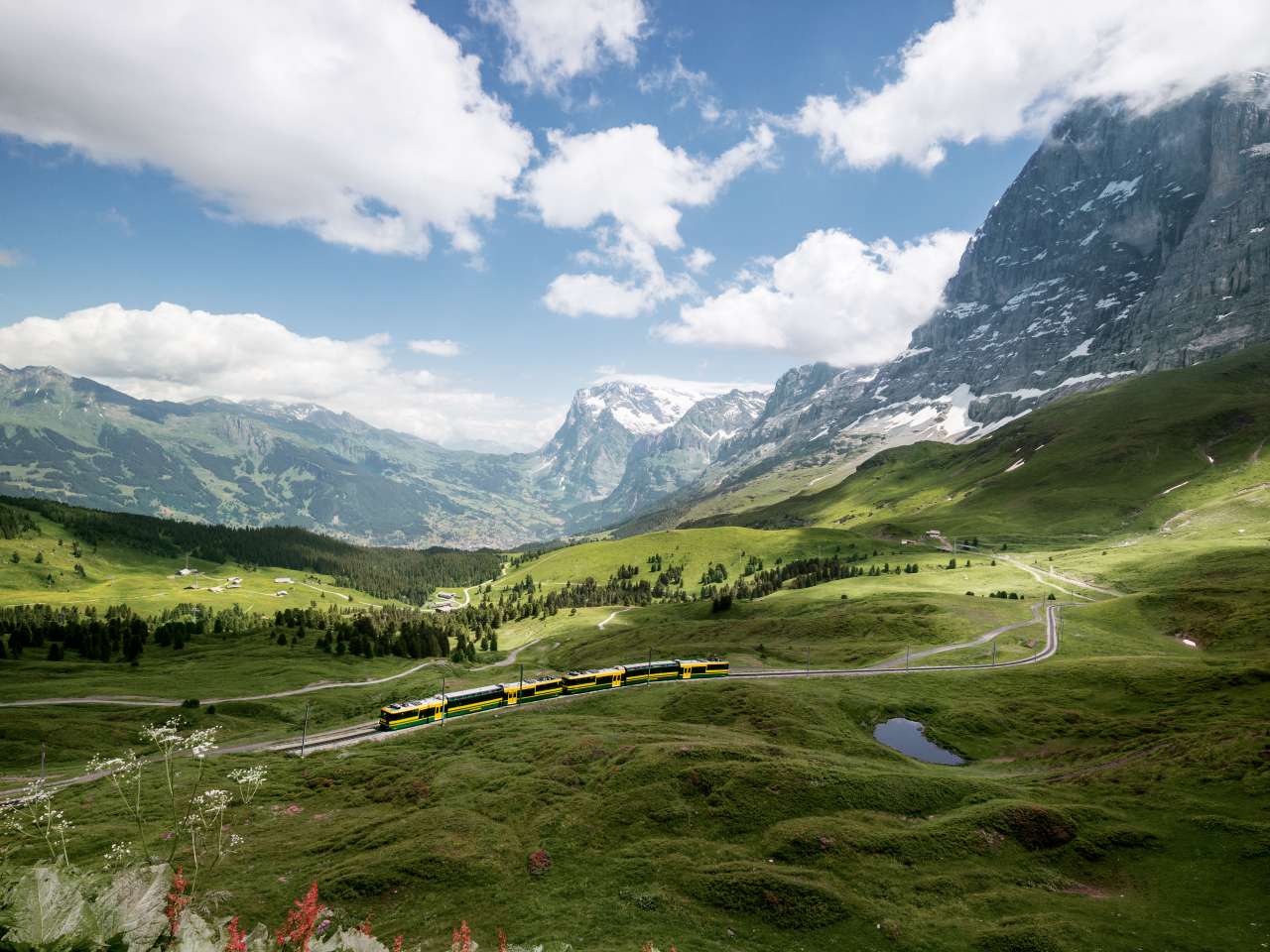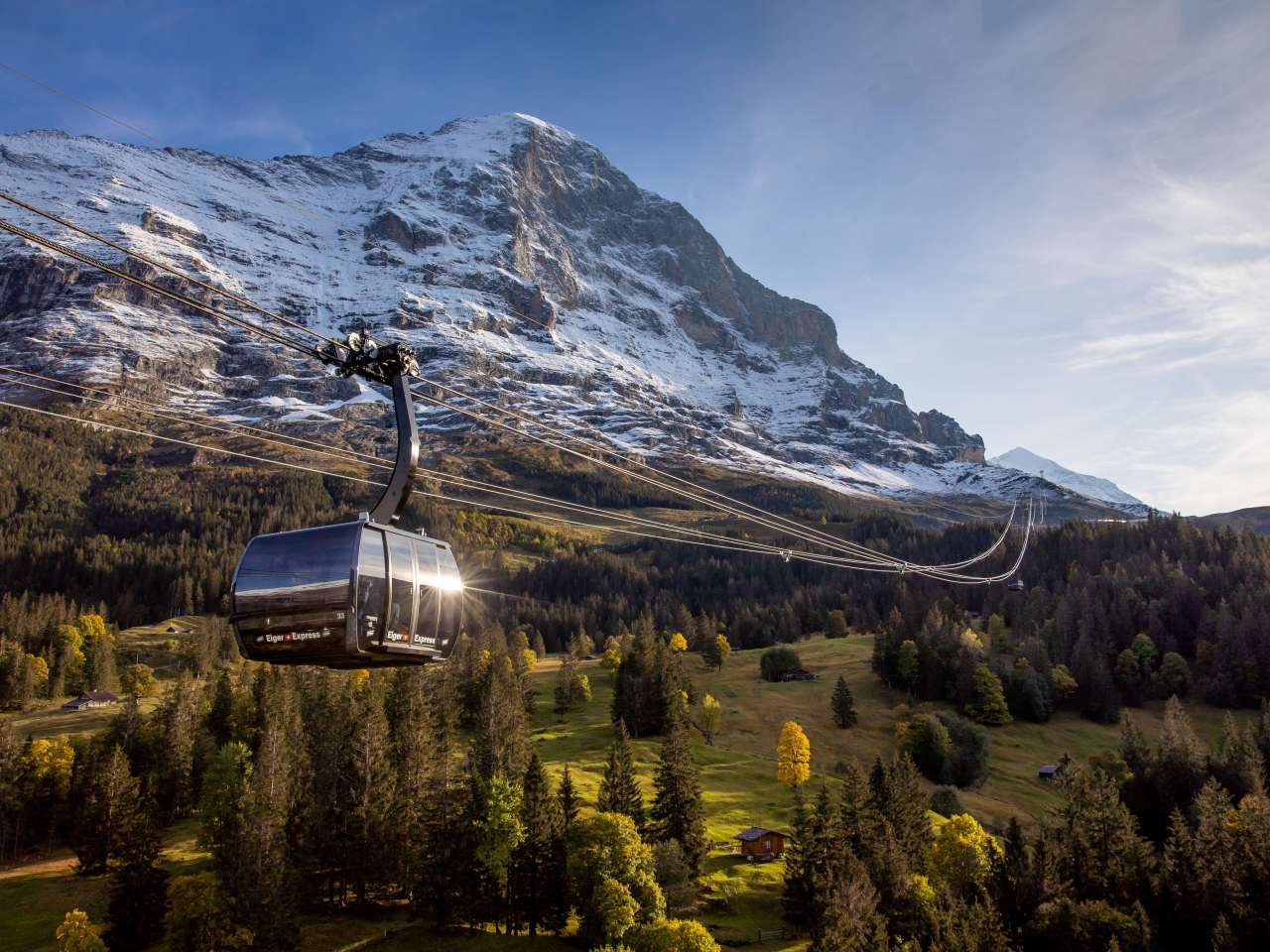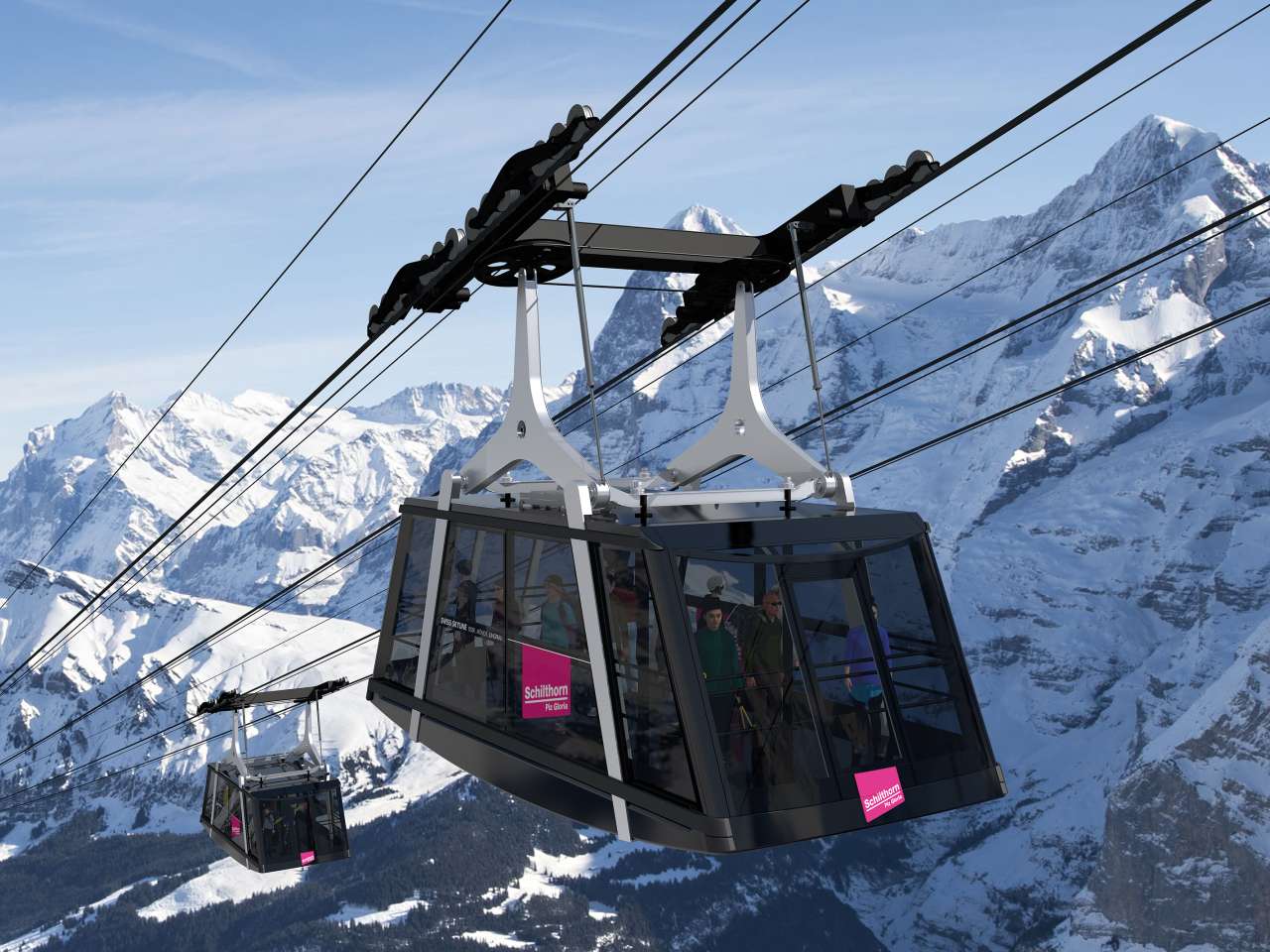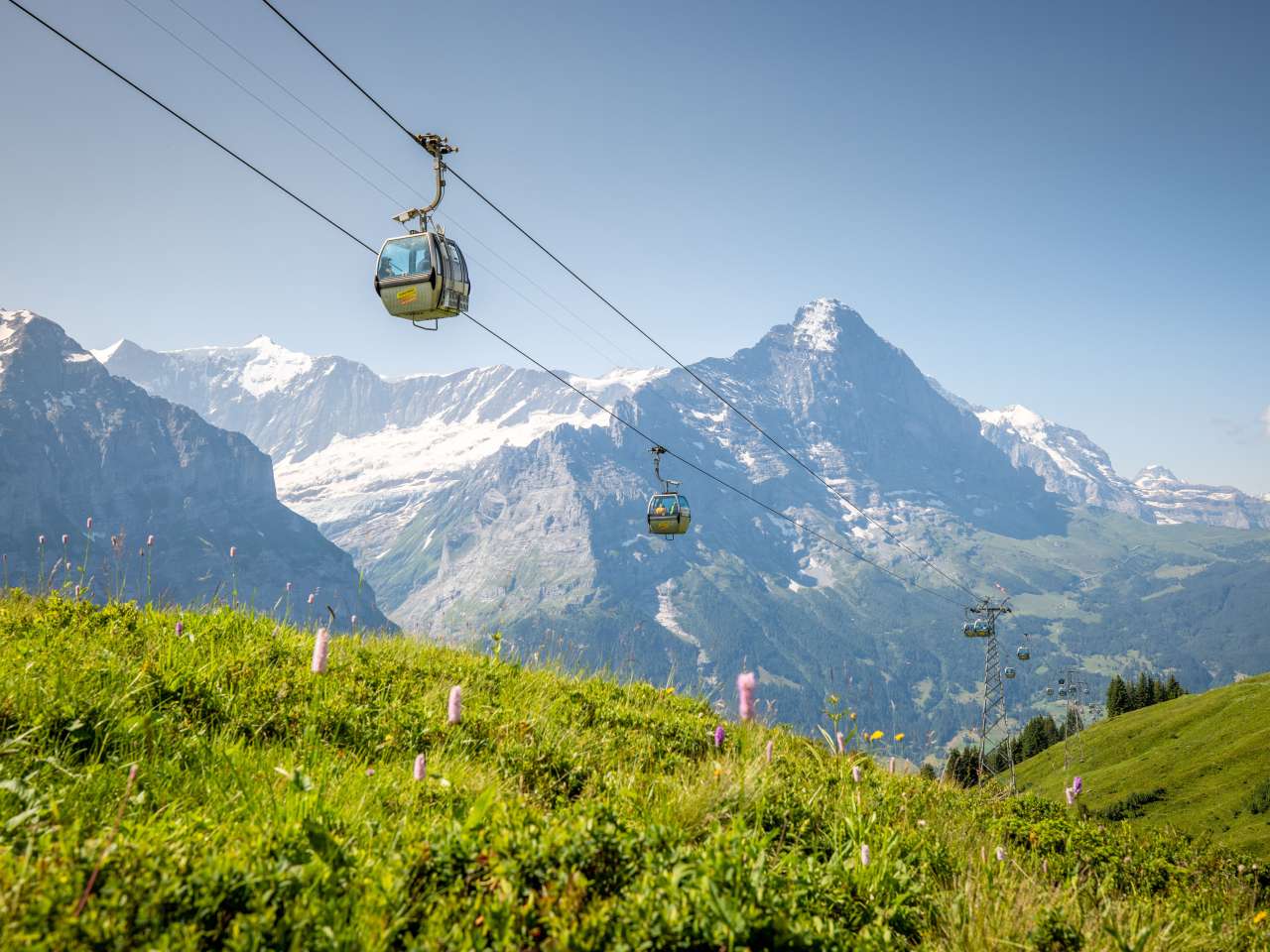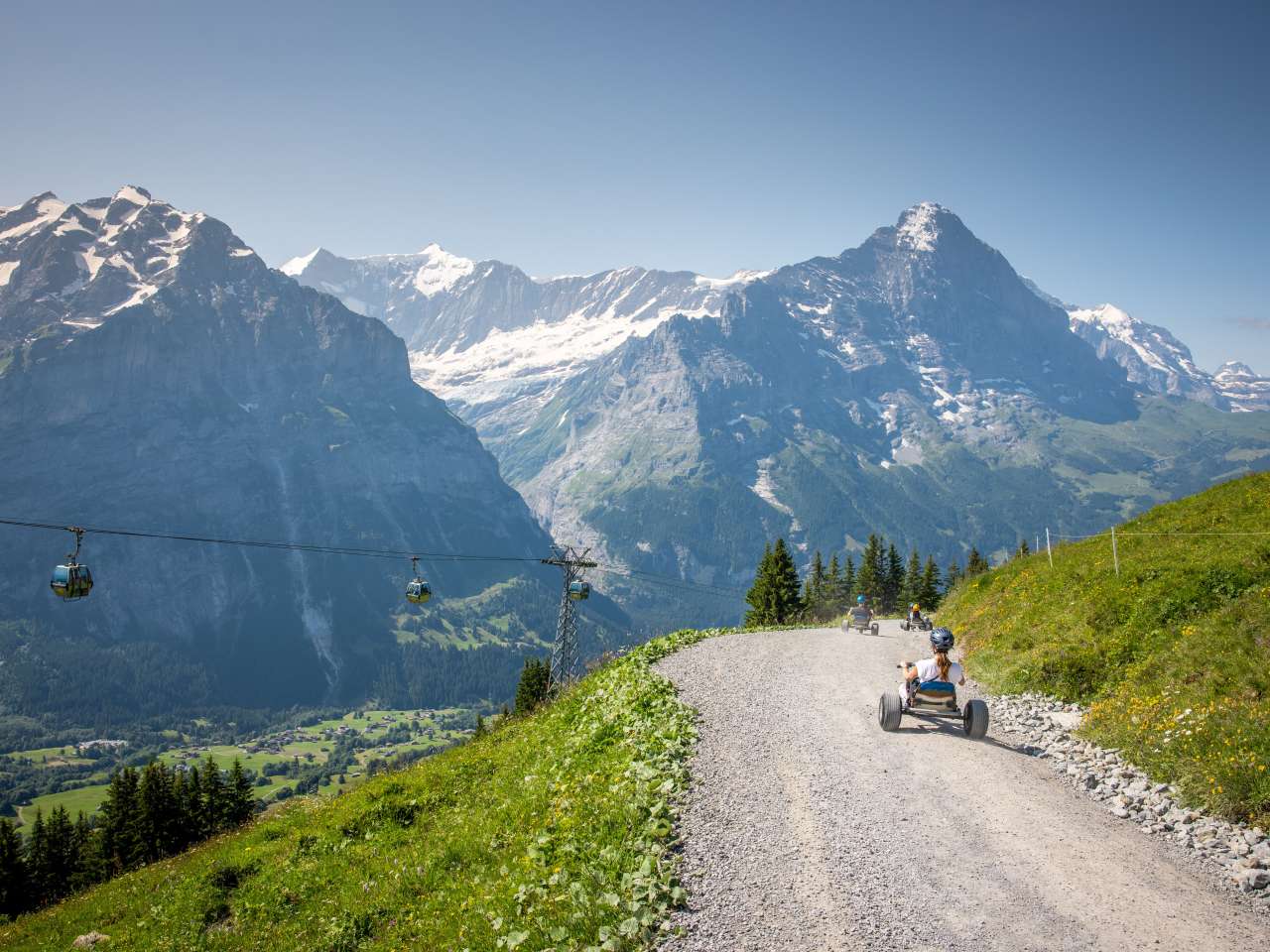People, especially the Swiss, have found many ways to transport themselves or goods up the mountain in a variety of ways. In the Jungfrau Region, this is very visible. From the funicular to the cogwheel railway, you will find everything in the region. In this blog, we will look at the differences.
The cog railway
A cog railway is a rail system that can overcome particularly steep sections of track thanks to a rack system built into the rail. A cog wheel on the train engages with the rack on the track, enabling a safe journey uphill and downhill – ideal for Alpine terrain. The Wengernalp Railway (WAB) is a prime example of this technology. As the longest continuous cog railway in the world, the WAB runs from Lauterbrunnen and Grindelwald, passing the Eiger, Mönch and Jungfrau on its way to Kleine Scheidegg. Its unique route not only offers an impressive technical solution for steep ascents, but also a spectacular panoramic journey that allows you to experience the beauty of the Swiss Alps in an unforgettable way.
The tricable gondola
A tricable gondola (3S) is a modern cable car system with two track ropes for stability and a drive rope for propulsion. This design allows for particularly large gondolas and a high degree of stability in strong winds. The Eiger Express in Grindelwald is an impressive example of this technology. The state-of-the-art tricable gondola lift connects Grindelwald with the Eigergletscher station, significantly reducing travel time and providing guests with quick and comfortable access to the region. With its stable cabins for up to 26 people, the Eiger Express is particularly stable in windy conditions and ideal for the alpine conditions at high altitude. The ride offers an impressive view of the Eiger North Wall, making the Eiger Express an attraction that perfectly combines technical innovation and the experience of nature.
The funicular
A funicular is a special railway technology that moves along steep tracks and is driven by a cable. Two carriages are often used, connected by a cable and moving in opposite directions to make efficient use of energy. A fascinating example of such a funicular is the Gelmer funicular. It is considered the steepest open funicular railway in Europe, with a spectacular gradient of up to 106 per cent. Originally built to transport materials to the Gelmer reservoir, the Gelmer funicular is now a tourist attraction that takes its passengers on an exciting, almost rollercoaster-like ride.
The cable car
An aerial cableway is a cableway in which two large cabins travel in opposite directions on parallel track ropes, driven by a hauling rope. This enables many people to be transported safely and efficiently over steep gradients and longer distances. A classic example of an aerial cableway is the Schilthorn cableway. It runs from Stechelberg via Gimmelwald and Mürren to the Schilthorn, where visitors can enjoy the Piz Gloria panorama restaurant, made famous by the James Bond film ‘On Her Majesty's Secret Service’.
The Schilthorn cableway is currently undergoing extensive modernisation. The Schilthorn cableway 20XX project involves replacing the existing cableway with a new aerial cableway that has a greater capacity and higher speed. The new cabins and stations will provide greater comfort and energy efficiency and make the operation future-proof. The reconstruction work will not only improve the reliability and speed of the cableway, but will also offer passengers an even more spectacular view of the surrounding panorama.
The gondola cableway
A gondola cableway is a single-cable circulating ropeway in which several small cabins are suspended from an endlessly circulating cable. These cabins move evenly in both directions and can be boarded and alighted at the stations during the journey, thus enabling fast and flexible transport. One example of this is the First Railway, which runs from Grindelwald to the mountain station at First.
The First Railway is a classic gondola cableway with cabins for up to six people. It transports guests over several sections, but also goods for the mountain restaurant and a system in which mountain carts are attached to the cabins between Bort and Schreckfeld and transported back up. The continuous journey and the high number of cabins make the railway particularly efficient and ideal for tourism in the region.







